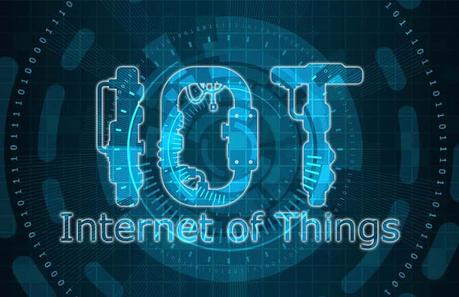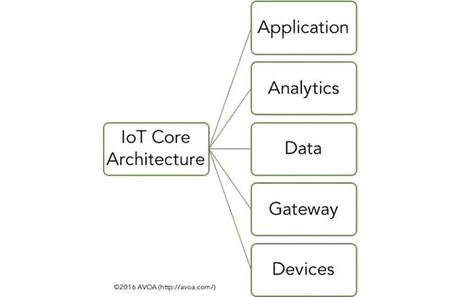
IoT app development is the hottest trend in the business and so both startups and enterprises are creating strategies to introduce engaging and hi-end IoT applications into their business.
Despite its apparent surge in demand, which is according to GlobalData, the market for Internet of Things is projected to reach $318bn by 2023, at a compound annual growth rate (CAGR) of 20%, many IoT app development companies face integration challenges while developing IoT applications.
To develop a fully-functional IoT application that can generate the desired revenue, businesses must turn up to an IoT application development company with the sound knowledge of technology components, platforms, security mechanisms, and APIs for their IoT app development requirements.
Even the slightest gap in integrations could lead to major failure. A Cisco survey reveals that "nearly three-fourths of IoT projects are failing".
This write-up highlights viable elements that are essential for the development of IoT mobile applications.
Let's begin with understanding technology components for IoT app development.
Integrating Technology Components for Developing IoT Applications
IoT has become a dominating concept in the industrial arena, and slowly making waves in the consumer segment as well. Although many customers are still not aware of how they are consuming this technology.
It is because the IoT concept is vast, and involves a multitude of technology components, independent of others to become one whole technology. For instance, sensors, Smartphones, and the Internet all have a unique role in the technology domain but are combined to deliver insightful information to understand consumers' behaviour.
For the internet of things to become operational, these tech components need to be integrated to generate value.
3 Key Components of IoT are:
The three main components for building an IoT application are:
- Cloud: On this platform, data is acquired, transmitted, processed, and stored.
- Network: It is the link between different connected devices on IoT.
- Things: It is the activities that can be performed to achieve the desired results.
IoT application development companies play a crucial role here. These companies integrate all the technology elements strategically to develop an architecture that allows information to flow from one end to the other end smoothly.
Developing Functional and Efficient IoT Applications
IoT is extraordinary. The technology concept lying on the evolution of home, mobile, and embedded applications spark the next industrial revolution.
Internet of Things opens up a world of powerful, real-time business information, that industries can use to discover business threats and strengths.
It put the ball's in the decision-makers court; they have the information, it is now their responsibility how critically they strategize.
For a large part of IoT app development, an IoT app development company has to spend time on selecting a viable platform.
Selecting an IoT Platform
There are many IoT platforms, however, these 3 platforms are widely recognized for their efficiency.
-
1. Amazon Web Services:
AWS supports a large number of cloud-based projects by supporting various communication protocols between different device manufacturers, facilitating monitoring, troubleshooting, and adding new device functionality. Automated analytics of huge IoT dataset is possible with AWS.
Besides, its security mechanism is advanced to enable IoT app developers to develop and manage security policies that control device authentication and authorization. -
Google Cloud IoT
Google Cloud IoT allows connecting a wide range of devices from different manufacturers and gathers their data. Processing event data and offering real-time stream analytics is also possible with Google Cloud IoT package. Using the package, IoT app developers can build advanced Machine Learning models and effectively use the data received from IoT devices. -
Microsoft Azure IoT Suite
Microsoft Azure IoT Suite comes with preconfigured solutions; however, it also provides the ability to customize and develop a new solution based on the IoT project requirements. The platform helps the IoT mobile app development companies to use the most recent security mechanism and apply easy integration to collect data analytics and use ML data.
Apart from these three platforms, there are other IoT platforms such as SAP Cloud platform for the Internet of Things, Salesforce IoT, Oracle Internet of Things, Cisco IoT Cloud Connect, Bosch IoT Suite, and more.
Well, if you will be using these platforms, pricing will be comparatively high. However, AWS offers a free tier with certain restrictions and requires a minimum investment to begin a project.
Creating 5-Tier Structure of IoT
IoT 5-tier structure is extremely crucial for the development of hi-end IoT applications. It is one of the most important elements of IoT application development that every IoT developer is aware of. But structuring this IoT architecture is extremely difficult and requires a lot of critical planning.
The 5-tier of IoT Core Architecture is:

Here's a detailed description of IoT core architecture:
- Device Tier: It includes all the physical devices that are required to collect data. The range of devices includes small sensors to large machines.
- Gateway Tier: Here, a gateway is created between devices and their respective data streams. The gateway acts as a common denominator and collects and homogenize the steams into organized, usable data.
- Data Tier: Data structures are created according to the type of data classified into volume, variety, velocity, and veracity.
- Analytics Tier: Considering manageability and speed, automate the process to convert data into meaningful information.
- Application Tier: This is the face of the IoT system. The application contains a user interface to provide meaningful information to the users or any other specific function for which it has been created.
Building A Robust Security Mechanism for the Internet of Things Application
IoT security is extremely challenging.
A quote by Robert S. Mueller, III, Director FBI "There are only two types of companies: Those that have been hacked and those that will be hacked" well explain the need of creating a robust security mechanism.
IoT application development companies have to remain cautious while creating a security mechanism that must cover all the aspects of security, such as device security, application security, and network security.
Since IoT apps involve a lot of public use, creating cyber security awareness among the public is also important.
Besides, Machine Learning can be effectively used to create the best security practices which include computation, digital forgetting, communication, and privacy settings.
Keeping API Interface Separate from Services
Artificial Programming Interface provides a gateway to access the data and keeping it separate helps in making the necessary changes according to future trends.
For example, desktop interfaces were popular sometime back but now has been replaced by mobile interfaces.
Meeting Scalability Targets
Technologists are still on the way to make the Internet of Things more viable and economically feasible for the customers. So, there is a huge scope for IoT to improve and for businesses to adopt new improvements, they must create possibilities for scalability.
If a business grows, data collection and processing requirements will also significantly increase. IoT application developers are required to monitor mobile app analytics that supports the scalable solutions.
Secure Data Management Solutions
Data management is integral to IoT apps. IoT app developers must create advanced data management techniques, focusing upon the following:
- Data acquisition: Allow data only from their services and block any unauthorized access.
- Data validation: Sensor data that records the change events must be validated to maintain accuracy and reliability.
- Data Storage: Machine-generated data comes in two forms: large files collected from Smartphones and small files of Sensor data. An IoT application development company must create different storage systems to store and protect data.
- Data Processing: Ability to process the data and minimize latency
Encapsulating IoT App Development
IoT app development is gaining huge popularity among startups and enterprises alike. It is because the technology has the capability to provide reliable and accurate data in real-time that can generate insight and strengthen decision-making.
Industries such as healthcare, transportation, and manufacturing are the potential avenues of IoT applications.
Also Read:
IoT in Healthcare Industry IoT in Manufacturing Industry IoT in Retail IndustryIoT App development companies are rigorously working in this domain to better structure the IoT architecture and handle data management to collect, transmit, and process reliable data.
It is up to the businesses to find a reliable IoT application development company that can understand their business requirements and based on that develop an IoT application.
